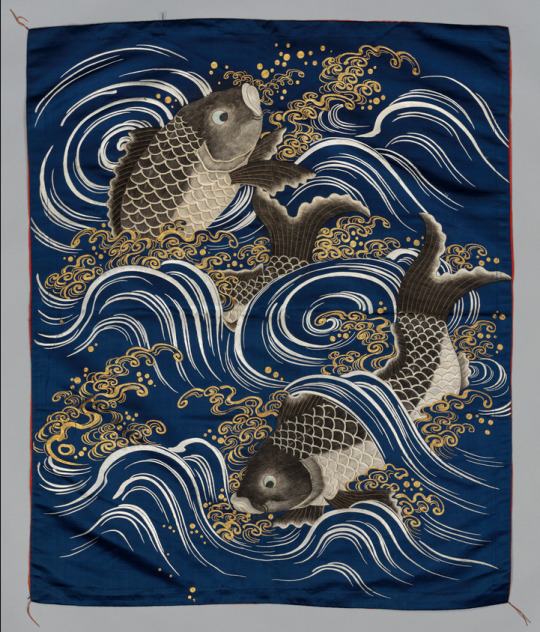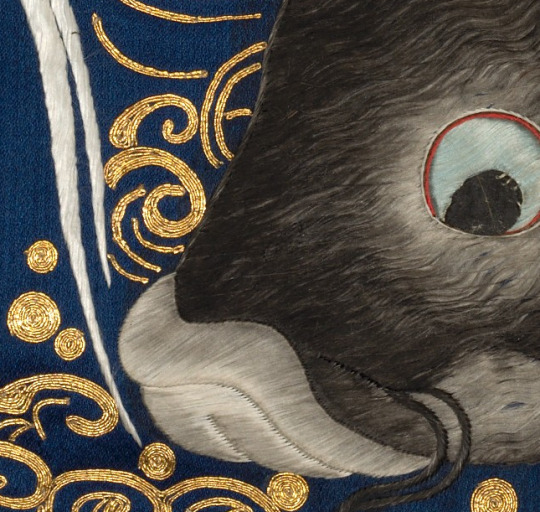#波鯉図刺繍袱紗
Text




Fukusa with Carp in Waves (波鯉図刺繍袱紗) - details
Gift Cover (Fukusa) with Carp in Waves, 1868–1912. Japan, Meiji period (1868-1912). Silk: embroidered; metallic thread; overall: 87.3 x 71.8 cm (34 3/8 x 28 1/4 in.)
The motif of carp in rough water originated in China. The expression “carp jumping over the Dragon Gate” (liyu tiao longmen) refers to attaining success in life, or, historically, to passing the imperial examinations for civil service. In Japan, therefore, a gift cover (fukusa) like this would have been appropriate to celebrate the recipient’s achievements.
#found by kino#Fukusa with Carp in Waves#japanese embroidery#fukusa#meji period#asian art#textile art#japanese art#波鯉図刺繍袱紗
11 notes
·
View notes
Photo

波鯉図刺繍袱紗 Fukasa embroidered with waves and carp, Japan, ca. 1860
Cleveland Art Museum
Provenance: donated by Mr. and Mrs. J. H. Wade 1916
87.3 x 71.8 cm (34 3/8 x 28 1/4 in.)
Fukusa (袱紗), is a type of embroidered satin silk cloth traditionally used in Japan for wrapping gifts. Eminent artists were commissioned to design these textiles and each work is an original creation. The practice of covering a gift became widespread during the Edo period (1615–1867). The scene or the motifs depicted on fukusa are chosen to indicate either the occasion for which the gift is being given, or because they are appropriate for one of the annual festivals, when gifts are exchanged.
[text source: @wikipedia]
#19th century#japan#fukusa#silk#textile#embroidery#carp#waves#museum#public domain#global art history
39 notes
·
View notes